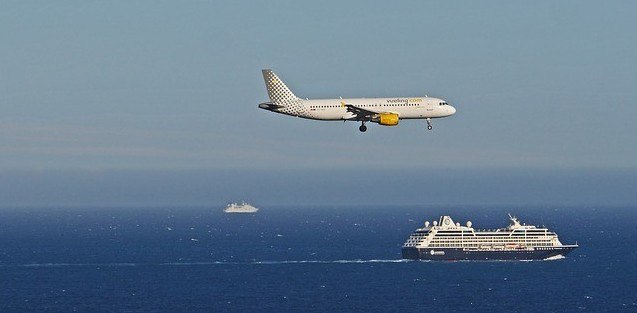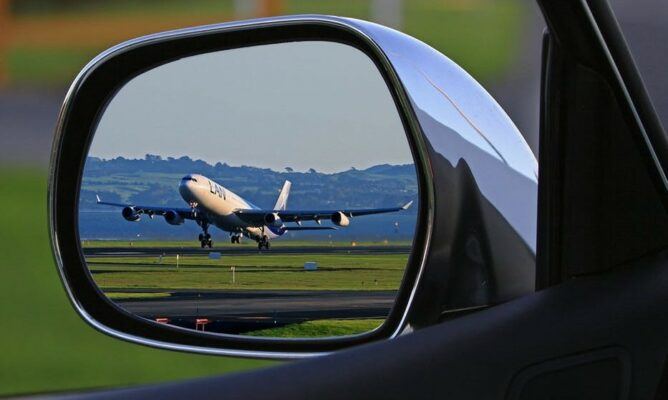Diabetes is a condition that triggers up and falls randomly and can be controlled effectively by lifestyle changes. These raise various factors that ignite a sensitive diabetic issue when travelling with diabetes. To guide you, here our expert panel has listed the in-depth list of Tips for Traveling With Diabetes. Notably, some of these tips no one has talked about, which you will likely find very helpful.
The management problems, stresses, rushing at the peak hours, forgetting the necessities put someone with diabetes into a pressured zone, in the frightened mode which adds to their sugar imbalance.
In this article, we will discuss how to prepare before your travel, how to travel and what to do once you’re reached your destination as an air passenger, sea traveller or driver with diabetes.
11 Best Tips for Air Travel with Diabetes
The stressed levels and the confusions shooting from all directions can shoot up your glucose levels too. Actually, the flying fears are less distressing when compared to the havoc caused by the stressful travel events experienced by an unprepared diabetic patient.
Air travel with diabetes demands careful planning and execution to ensure a comfortable journey. As with many patients who are seasoned travellers with diabetes, we understand the challenges you may face.
Here are invaluable tips to empower you on your next air adventure:
1. Be hydrated
Another condition to up-level your diminishing blood glucose less being fed on the drinks. Drink lots of water, juices while flying. Get your assured drink bottles packed along and those that can pass the airport security check.
The dry air of the planes throws you into more thirst, so keeping yourself full of liquids for the long flit’s keep your normal.
2. Stroll around
Have a walk around the cabin; this prevents the travel edema that creates swollen feet and fingers when sat for long hours. The body should always have a peaceful blood circulation, which is possible by some little strolls now and then.
3. Comfort comes first
Place your comfort first while your set for your flight.
Even if you are on a rush to get the supplies packed, reaching the airport a few hours ahead of departure time, see your dressing to be comfortable and it should not add to your existing stress.
Pick a Correct Pair of Diabetes-friendly Shoes; a doctor prescribed pair would be the best.
If you face any discomfort on the board, solving immediately with the crew is essential for a comfy journey.
4. Avoid alcoholic beverages
Keeping your body hydrated is the foremost need, yet taking alcohol is strongly prohibited for a person with diabetes. Even if you have a strong instinct for one, a Diabetic Type One or Type Two Patients are more strongly resisted from any alcohol consumption. It worsens the situation on a daily routine, so onboard alcohol choice is not appreciated.
5. Food for the flight
For a person being on a Diabetic Meal Plan on an honest regime, a sudden disturbance in the food habits and timings of intake for a drastic 4-5 hours may indefinitely affect the blood glucose/ glycaemic levels in the body.
Whether on a flight or at home, your diet plan should be not much altered. Pack your meals, snacks, fruits etc. everything that carries your health along with suiting yet keeps meal plans.
Some of the flights offer the meal services, decide yours, supporting your needs and that recompense the diet. Do not deprive your body of food at any circumstances during the journey.
6. Preparing yourselves
Change in the time zones of the places from where you are to the place you are traveling to may affect the routine. Adjusting the medication intake times with a consultation from a doctor is a primary necessity.
U. S. Transportation Security Administration (TSA) pre-checks avoid those lines of security checks, for which it is to be paid. This saves a lot of stress and time.
The precautions and preparing your body for the place you are traveling is an absolute need as; it may have climatic variations which cause allergies, infections, sun strokes, the hyperthermia gives hyperglycemia, while the cold climates give hypoglycemia.
The hypothermia also drastically affects the Peripheral Neuropathic (Nerve Pain) adding on to your diabetic feet and medical history carried along with the handwritten prescription of your physician to get the emergency health care on board or in the destination.
7. Key information
Remember, to take some key information with you, about you and your diabetes.
For example, your contact information, emergency contact details, a summary of medical history, health insurance, travel insurance, diabetes ID card, your doctor information along with the prescriptions and recommended dosages of the insulin are all essential information.
Keep them accessible, all the time.
8. Diabetic medications
Most of the people with diabetes are on daily medication; changes can’t be done in the intake of those medicines.
Get all your tests done, medicines prescribed and brought even a bit more than the regular need before you get on board.
A prescription by your doctor will also serve you a great deal in an emergency in a less known place away from home.
9. Insulin stock
Basal insulin dose is to be taken before the take-off to maintain the prescribed intake of the dosage as in a routine.
The time zone difference between the places causes the inconvenience in the medication. Therefore, your doctors’ suggestion is a must for his patient traveling a long distance through air to ensure good diabetic health.
The pressure in the Airbus and the land pressure differences may end up your insulin tubes with bubbles. The recommendations and cautioned insulin tubes of your prescribed dosage should be carried as suggested by the pharmacist.
Though universal guidelines of insulin dose for patients with diabetes who travel long miles is not stipulated by any medical councils across the world, personal advice from your doctor is always advisable.
10. Blood sugar monitoring device issues
Get your insulin recommendations after a sequence of tests from your physician, carry an insulin freezing bag and a prescription for all your diabetic supplies.
Carry the devices like a backup insulin pump, though not recommended, it stays on it all the way, and a check on the blood glucose levels, with the monitoring devices you have.
Learn about health care and diabetic support and treatments available on the place you travel to.
Security check issues are always at the end when you are carrying diabetic medicines. Though no check on the tablets your carry, the insulin pumps nay hinder the security checks, which can be solved with a prescription.
Take a pat-down check rather than scanners when you are on devices.
Carry your snacks, medications, insulin pumps, prescription in a carry bag or a handbag. Put a store of your medicinal supplies in the checked baggage to ensure a part of the baggage with yours, even if your lost one.
I have previously covered Everything About Diabetes Blood Sugar Monitoring and Testing.
Check on the skincare, neuropathic kit, injections, batteries, energy foods, test strips, lancing devices, and hot and cold packs.
11. Medical emergencies
Be prepared for medical emergencies when on board. No matter how pre cautioned you are with your boarding and flight, there may always be a chance of an emergency.
Not to be a shame of ask for help, when you think it’s necessary.
While we have covered some great tips for air travel with diabetes, now let’s look into a scenario where your travel on the road.
12 Tips for Car Travel with Diabetes
Road trips are always fun, travelling through the breezes, steep and high roadways, exploring new places, meeting cultures, and people rejuvenate your spirits. But traveling with your diabetes should not be a spoiler for your joy.
Here I provide certain tips for your road trip for a stress-free journey.
1. Monitoring the glucose
Keep checking on your blood glucose levels with the monitoring and lancing devices for every couple of hours, if you find any tracks of fall in your blood glucose levels, switch off the engine and pull yourself aside if you are driving.
2. Medicines and devices
Traveling with your insulin pumps and medical supplies, test strips, are wipes are not avoidable step when you have diabetes. Have a good deposition of them along with yours.
Make sure they are packed in cooler bags and gel packs safe from the scorching sun.
Your car cabins and even being placed in your dashboard, or on the seats next to your may damage the pumps. So, storing your devices is also an important part of your journey.
3. Avoid street foods
When you sit with the wheel, your body goes tired soon or longer regularly at frequent intervals, bring snacks, the meal plans, and the fruits in good portions to avoid your body starving and also preventing the unhealthy street foods down the way.
Stick with these Diabetes-Friendly Foods while on the move too, and do not get distracted by Diabetes Food Myths.
4. Stay hydrated
Carry a lot of water and juices in the vehicle, you know it is crucial as your body always loses water, intake of fluids corrects your low blood glucose levels.
Recheck your insulin levels before kick-starting the gear.
Has the insulin dosage prescribed! Lack of insulin and also hyperglycemia may cause lethargy, fatigue, dizziness and sight issues.
Travelling with unbalanced blood sugar levels is dangerous.
5. Contact information
Health insurance, travel insurance, medical history, diabetes ID card, contact information, your doctor information along with the prescriptions, dosages of the insulin, etc. Being decked up in your vehicle is of foremost importance.
6. Snacks baggage
Snacks serve a great boost when away from home and not in access to any of your stipulated diet plan.
Take snacks with guarded portions. Almonds, nuts, popcorn, foremost candy and carrots, boiled eggs serve your carb needs. Peanut butter, berries, tuna salads, freshly cut and zip stored vegetables rescue your starving body.
Sugary snacks should be emergency support when your glycaemic index drops indeterminately. They cope up instantly the needed sugars by the body.
7. Doctor’s advice
Consult your doctor before a very long road trip; you may not be indicated to travel with your insulin deprivation, neuropathy, and hypos, and hyperglycemia conditions varying. Their precautions and prescription is always an amendment to your health and safe travels.
Did you know How to Find a Good Doctor to Treat Diabetes? Just follow the link to read my popular article.
8. Exercising
Aggressive exercise while traveling down the roads is not suggestive. An exhausted body and a hectic exercise in a long drive simulates the deprivation of blood glucose levels and may lead to the hypoglycemia.
9. Protection
Allergies, suntan, sub burn can’t be avoided when on travel. A comfortable dressing, sunglasses, sunscreens should be a priority.
Remember, high temperatures cause hypoglycemia and affect your driving.
10. Altitude care
Glucose deposits should be taken along when going on heights or altitudes in your roadway. The oxygen levels lower as your ascend so your glucose levels in the blood proportionately could drop.
11. Walks and Stroll
Sitting for a continuous trip clots up your circulation, leading to significant edema’s and swellings in both the limbs, neuropathic issues if present still worsens the numbness, good blood rush all through your body is necessary.
Regular stops for walks and strolls in a long journey facilitate freshness and pumped up circulation to all the organs.
You may know a few new friends too along the way as you stop to breathe.
12. Emergency care
Be aware of the hospitals, emergency care services, emergency phone numbers available through your route.
Intimating your family and friends about your trip is also a great precaution.
Finally, when you get behind the wheel, you should be assured that your have controlled sugar levels, your diabetes box at hand and license approved as some countries don’t allow people with diabetes to drive.
If you came across through the headaches, anxiety attacks, tremors, seizures, clumsiness, blurred vision and mood swings in the living, stop the vehicle and make sure to ring up the emergency numbers 000 or 911 and ask for help.
Ignorance of such symptoms while driving can lead to the progression of your symptoms and fatal outcomes.
I have previously covered must know diabetes symptoms for adults and children.
Driving with Diabetes vs. Traveling as a Passenger
The people with diabetes are restricted from driving mainly of two reasons being highly prone to the vision disorders and low blood pressures with the unpredictable imbalances in the blood glucose levels.
A great list of tips and backups are suggested when you are on a high need to drive.
Pre-Travel preparation is necessary for a diabetic person to travel alone; however, I would never recommend you to do so.
The emergencies that arise from diabetes are not promisingly guarded. It is always safe for a person with diabetes to travel as a passenger than a driver to push back the risks and take safe travel.
Even then being a passenger with diabetes is not a real easy task provided, followed by tons of precautions and guidelines, and what was noted above still applicable to yours.
8 Tips for Sea Travel with Diabetes on a Cruise

Cruising on a ship is exhilarating with the limitless entertainment, exotic buffets, music, and delights, dances of various styles being performed, light shows, spectacular views from the deck, the tantalizing sea breezes, soothing massages, gyms not. It leaves a great experience for even diabetics when followed the travel tips noted below, and overall precaution in this article.
1. Disposing of the waste
Disposal of your medical supplies and wastes is a significant deal when on board in the ship. You may be provided with the sharp boxes in your stateroom, if not be sure to ask for one from the steward after your report of the boarding.
2. Refrigerating medicines
Storing insulin pumps, glucose supplies, medicines, syringes and wipes need a refrigerator. You can’t keep them in cooler packs all along your voyage; your stateroom may sometimes be equipped with a mini-fridge. Otherwise, get them stored by a talk to the crew.
3. Control over the food
When you are voyaging, the ships are decked with all kinds of delicacies, cuisines, and savouries from the places it traverses throughout the way.
Keep a track on the food your intake and glycaemic index, the meal plan options when you pick the food from the menu.
4. Foot care
Neuropathy is an extra sprinkler which comes along with dreadful diabetes.
Never go barefoot in the ship, check for blisters, swellings, and infection that comes with the climatic fluctuations.
You are best protected if you stick with my recommendations for How to Prevent Diabetic Wounds.
5. Snacks and supplements
Carry your food bag with snacks, supplements that regain your drops in the blood sugar levels. The abundance of snacks, fluids that are directed by your dietitian should never become your extra luggage.
6. Other medications as a precaution
Airborne diseases, respiratory infections, acute gastric infections and seasickness are prevalent on the ship. Visit your doctor before the voyage and request for any outstanding vaccinations (e.g. Hepatitis vaccine, flu shots…etc.) and medications to take at the event of sickness that go along with your diabetic medicines.
7. Exercise
You need not skip any of your exercise routines with an excuse of the voyage.
The ships are not only for entertainment, spectacular nature views but also they have gyms, relaxation spas and workout areas. Pack your workout outfits along with your other clothing.
8. Self-hygiene
Be conscious about your hygiene, no matter how careful you are, the viruses and bacteria intrude from nowhere, especially when you are in crowded areas. Use hand sanitizes.
Talk with the cruise crew before getting on board about any available diabetic food plans, emergency procedures, insurance arrangements, and other extra accommodations and facilities if any available. Get prepared as per their recommendations.
In summary
By combining practical advice with our in-house expertise in managing many people with diabetes, we hope to make your travel with diabetes smoother and more enjoyable, regardless it is air travel, car travel, sea travel or a cruise.
I would say as a person with diabetes, you can easily and securely go away on a voyage by a cruise, a car or plane. What is crucial is your pre-travel preparation, discipline while the travel, know how to take precaution and timely actions. Never think twice to ask for help.







There are so many people with diabetes that can use this information, in fact, I see what you are sharing as a really excellent guide. You have covered everything and what you have written is a must-read for those with diabetes. Thanks so much for sharing I have booked Marking your post. I am really impressed what the debt in which you have written. Truly amazing and thank you.
Dear Norman,
I want to express my heartfelt gratitude for your kind words and positive feedback regarding my article on traveling with diabetes. Your thoughtful comment truly warms my heart and reinforces the importance of sharing information that can make a meaningful impact in the lives of individuals managing diabetes.
It’s incredibly heartening to know that you see this article as an excellent guide for people with diabetes. Traveling with diabetes can indeed present unique challenges, but with the right knowledge and preparation, it’s possible to have safe and enjoyable experiences. Your recognition of the comprehensive coverage of the topic and your decision to bookmark the post mean a lot to The MediChannel Team.
I’m thrilled to hear that you find the content helpful and comprehensive. Your encouragement fuels my dedication to continue providing valuable insights and tips to support individuals on their diabetes journey. It’s individuals like you, who appreciate the effort put into creating informative content, that make sharing my expertise so fulfilling.
If you ever have further questions or if there’s a specific aspect of diabetes management or travel that you’d like to explore in more detail, please don’t hesitate to reach out. Your engagement and enthusiasm inspire me to keep striving for excellence in providing knowledge that can positively impact lives.
Thank you once again for your kind words and for marking the post. Your support means a lot to us.
Warm regards.
A very good and very informative article about the measures, the way and methods of a person who should travel or live with diabetes. from my experience, diabetes as an essay that has opened a lot these days affected my father and I agree with all the measures that should be taken into account in a trip. Thank you for this article.
Hello Aida,
Thank you so much for your thoughtful and heartfelt comment on my article about travelling with diabetes. I’m truly touched to hear that the article resonated with you and provided valuable insights, especially given your personal connection to the topic through your father’s journey with diabetes.
I’m sorry to hear that diabetes has had an impact on your family, but I’m glad to know that you find the measures and recommendations outlined in the article to be in alignment with your own experiences. Navigating travel while managing diabetes can certainly present its own set of challenges, but with careful planning and awareness, it’s very much possible to enjoy safe and enriching journeys.
It’s heartening to know that the information I shared can be of help, and I truly appreciate your kind words. Diabetes is a condition that requires ongoing attention and care, and I’m honored to have contributed in some small way to your understanding of how to approach travel while considering the needs of those living with diabetes.
If you ever have any questions or if there’s anything else related to diabetes or travel that you’d like to explore, please feel free to reach out. Your feedback and engagement inspire all at The MediChannel to continue sharing knowledge and insights that can make a positive difference in the lives of individuals like your father who are navigating this journey with resilience and strength.
Wishing you and your family all the best, and safe travels to you all.
Take care.
This is such an excellent article and would surely be of help to a lot of people including myself.
Ever since I’ve been diagnosed of diabetes, I have eliminated traveling out of my schedules because I fear the negative effects it may have in my health, however, a friend of mine is getting married which demands my presence in Greece. So, I decided to carry out a little research on my own as a preventive measures after I had visited my doctor.
These tips are golden and surely, I would bookmark them so I can read and reread while preparing. Thanks
Hi Steph,
We are glad that you found Shani’s article helpful. Please Contac Us, if you need clarifications with anything.
Have an enjoyable trip to Greece.
Best wishes.
Dear Shani,
May I not congratulate you on your persistence in creating this helpful and informative article! Any person who devotes that much time must of necessity make discoveries of great value to others. You did it!
My father-in-law is struggling with diabetes because of that reason as a family we stopped traveling. Picnics, attending marriage functions, etc are now not on the list. If the marriage is for our closest relatives we all go and my mother-in-law takes care of him. However, she also loves to attend the function but she sacrifices.
Going forward using the helpful tips I learned from your article I have decided to take my father-in-law with us.
We often travel by car, walks and stroll are the things my father-in-law need to implement to avoid the swellings in the limbs.
I am bookmarking your post for future reference and I am going to share your post with my father-in-law. For sure he will find great value and it will boost his confidence level to travel without fear.
Much Success!
Paul
Dear Paul,
Thanks for your lovely words. Comments like the one from yours, remind us how important for us to write more valuable content for our regular readers. Thanks for being a big part of that community. We are glad that you found the article useful.
Best wishes.
I am very happy to testify that I am finally cured of diabetes diseases totally. It was the greatest surprise to me after many years of suffering.
My diabetes got worst even when I followed up with the medication and food control from the medical doctor. I was totally confused in life because I wanted to live a life of good health. Luckily, a friend of mine introduce me to a herbal doctor and I was cured totally with the use of his strong herbal medicine. Afterwards, I went to the hospital for a test and the doctor confirms that I am free from diabetes. I am using this means to inform other people who have diabetes that there is a total cure.
Hi Harrison,
Thanks for sharing your story with diabetes.
You are an excellent example for how many people are managed to reverse Type 2 Diabetes through alternative medicine, which we have also noted in our popular articles; Home Remedies for Type 2 Diabetes, Diabetic Wound Care And Treatment, and Diabetes Leg Pain Relief.
Take Care.